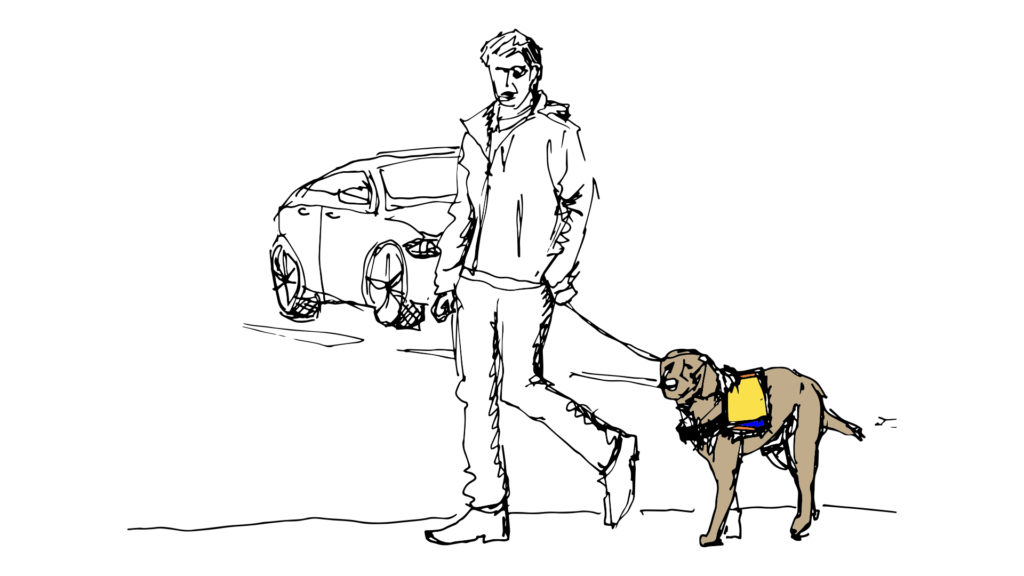
Possible use case for Canine-Centered Computing: Jacob has epilepsy. His medical alert dog Dug is trained to sense an oncoming seizure and notify Jacob before it starts. Dug is trained to nudge Jacob to a wall so he does not fall down. Dug is also trained to lick Jacob’s face until he recovers. Dug, however, is special; he is also trained to interact with a wearable computer on his service vest. When Jacob has a seizure, Dug can activate a capacitive bite sensor on his vest, which notifies health services and Jacob’s loved ones of his condition and where to find him.
I thought it might be time to give an update on the FIDO (Facilitating Interactions for Dogs with Occupations) project as recently I helped author a survey paper on the subject for Foundations and Trends in Human Computer Interaction called Canine-Centered Computing. The survey includes my work to understand how dogs might best use touchscreen interfaces Going to the Dogs: Towards a Touchscreen Interface for Working Dogs and Canine Computer Interaction- Towards Designing a Touchscreen Interface for Working Dogs. The survey also includes a description of a Search and Rescue System using wearable technology for working dogs developed from techniques researched for the original FIDO Paper and Journal Article.
We have taken our initial research into how dogs might interact with wearable computers and prototyped a Search and Rescue System where the dogs uses a wearable computer to communicate with a dog handlers mobile device. The following images show what the system might look like for both the dog and handler.
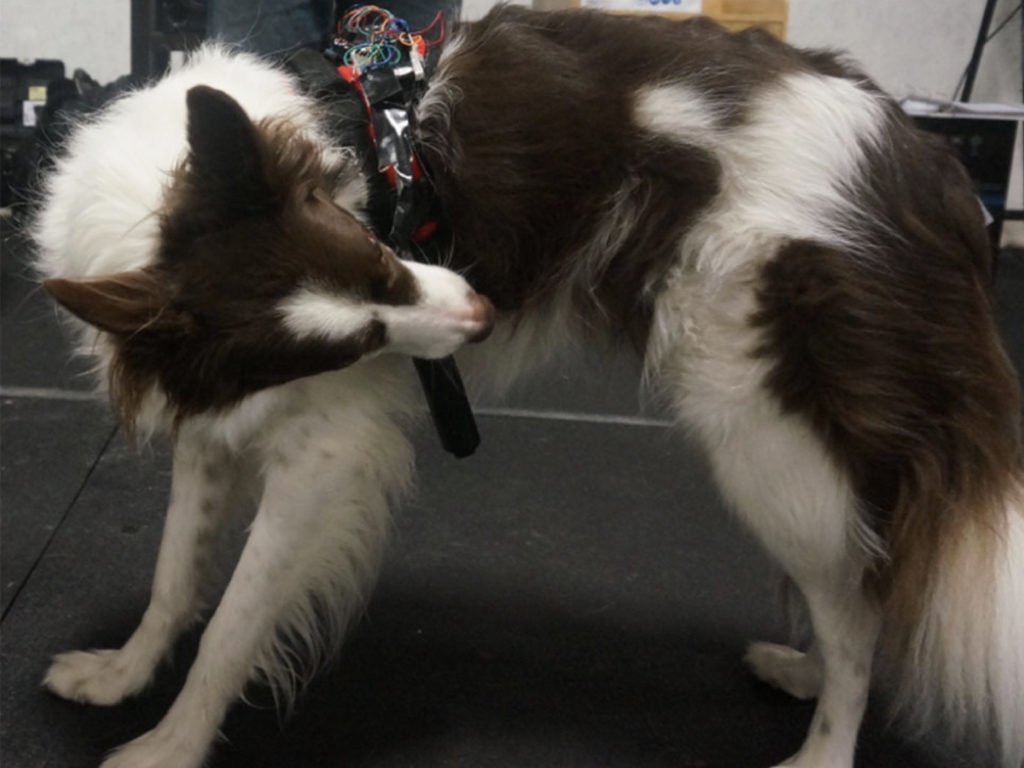
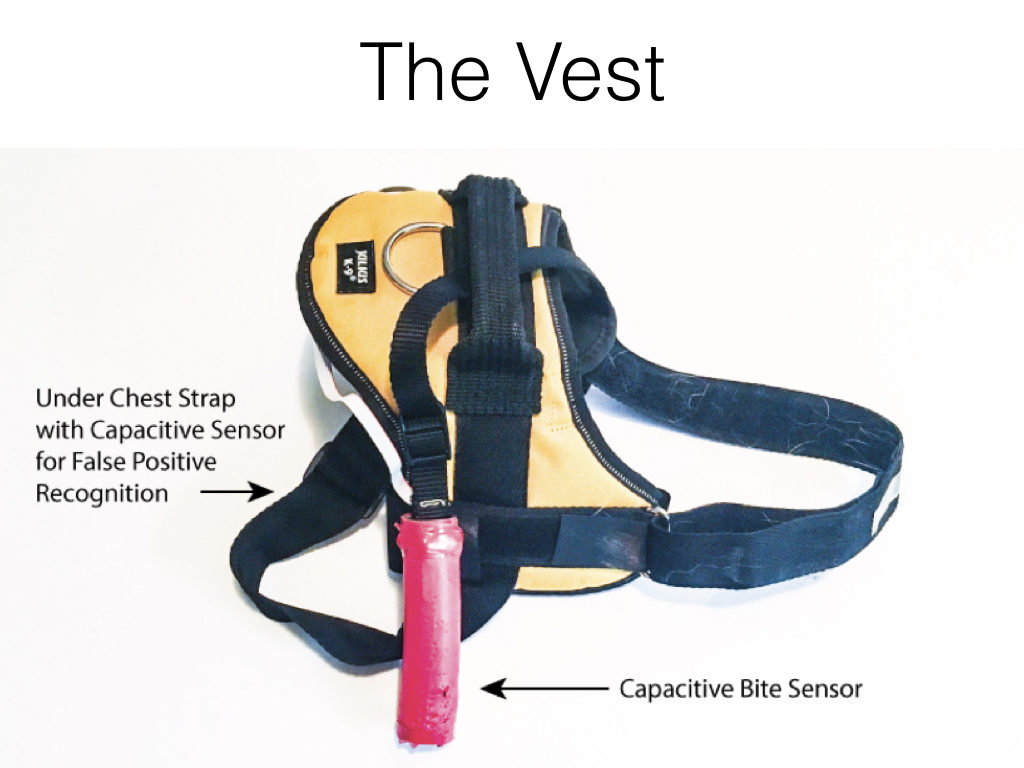
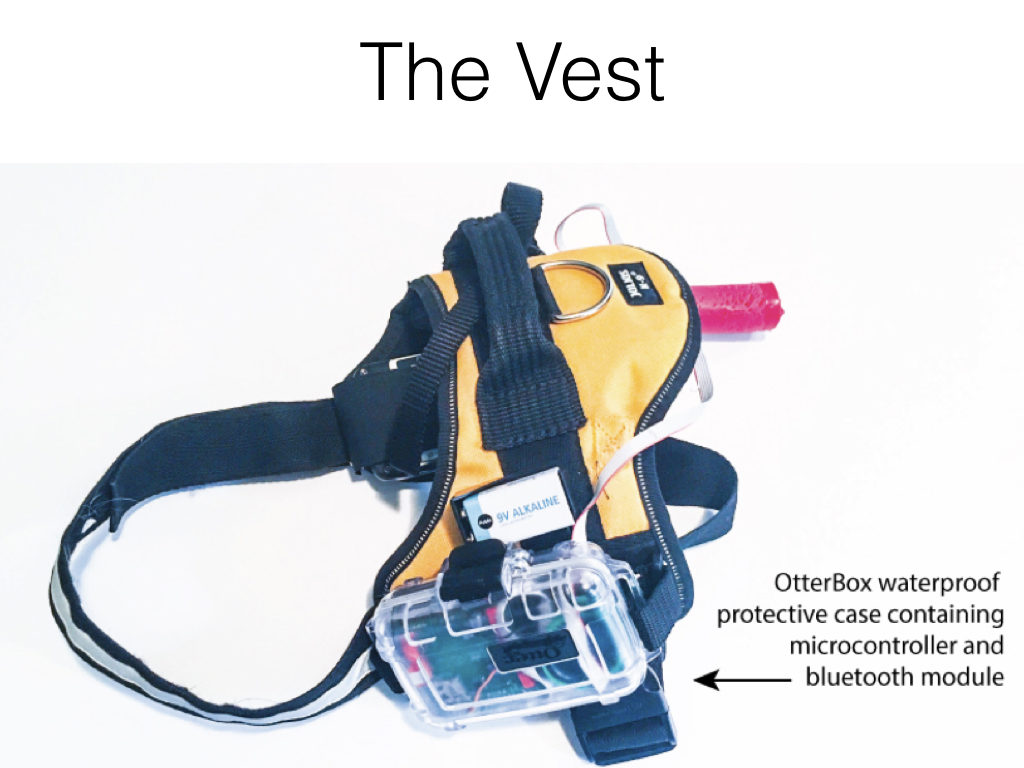
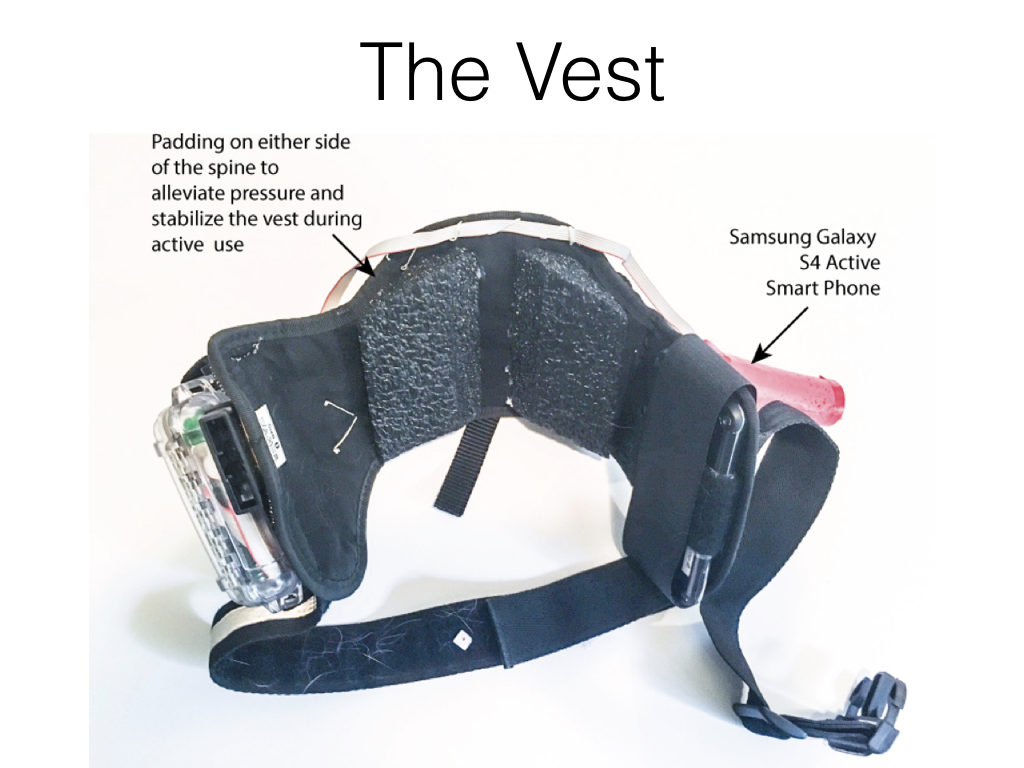
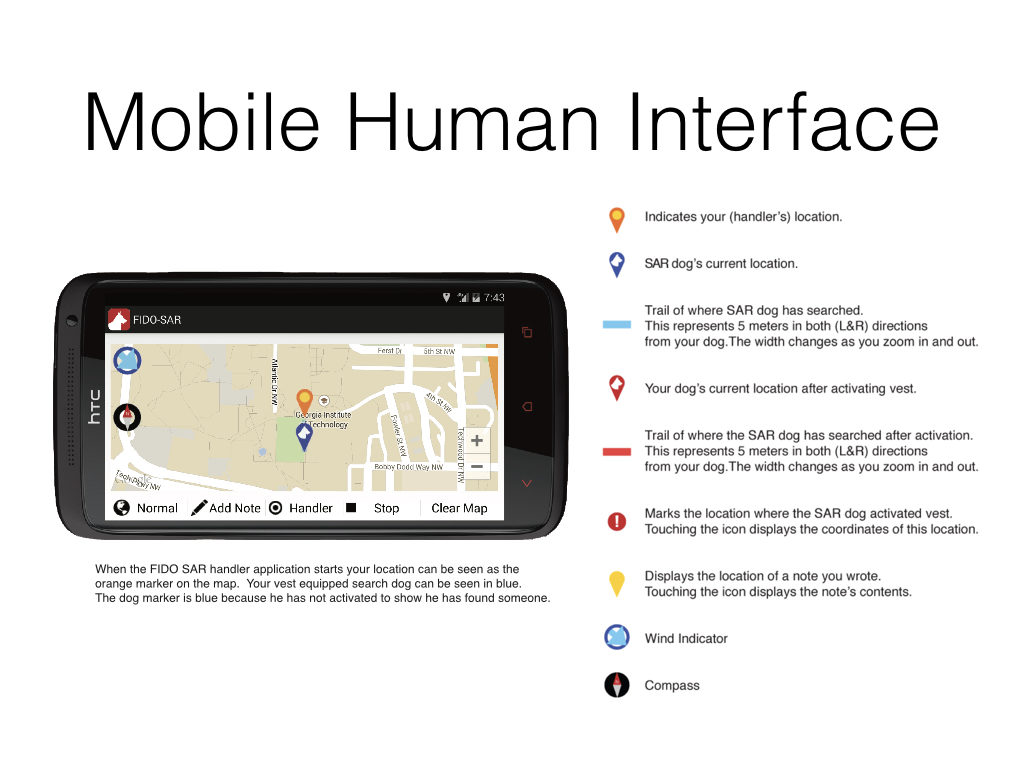
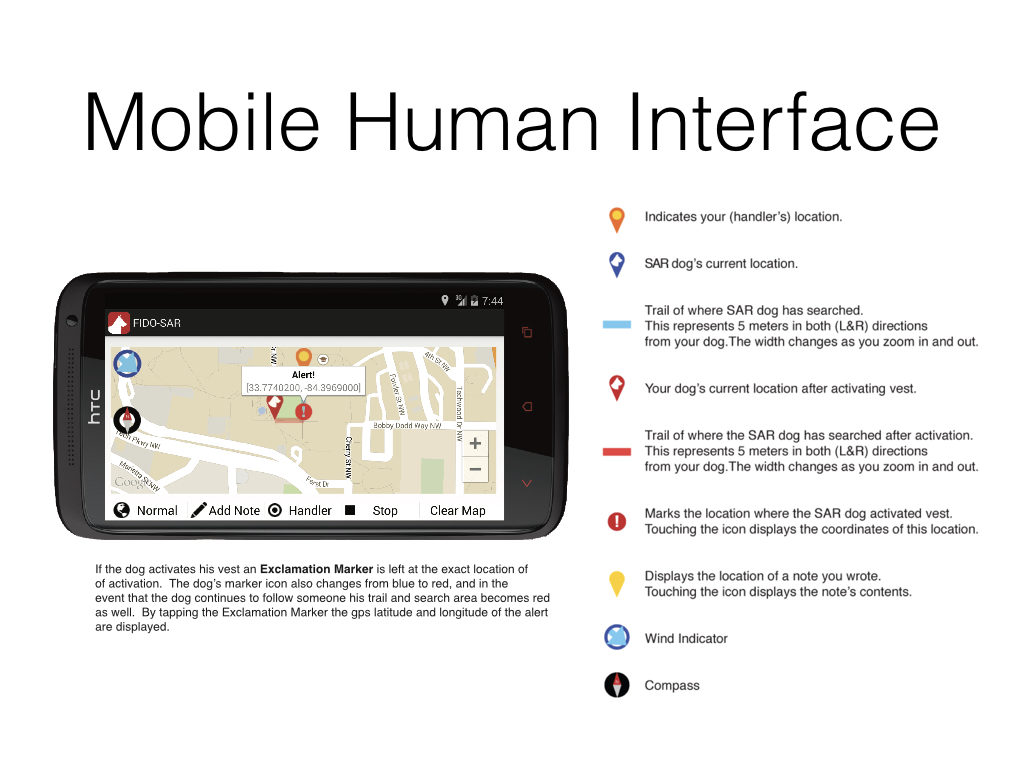
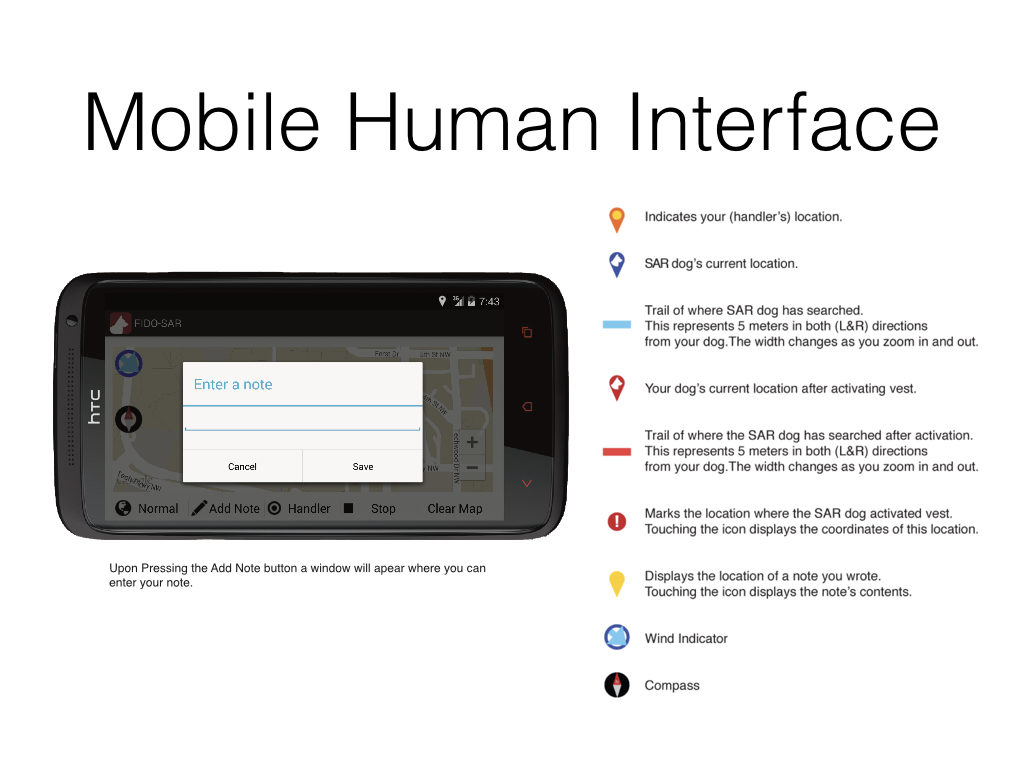
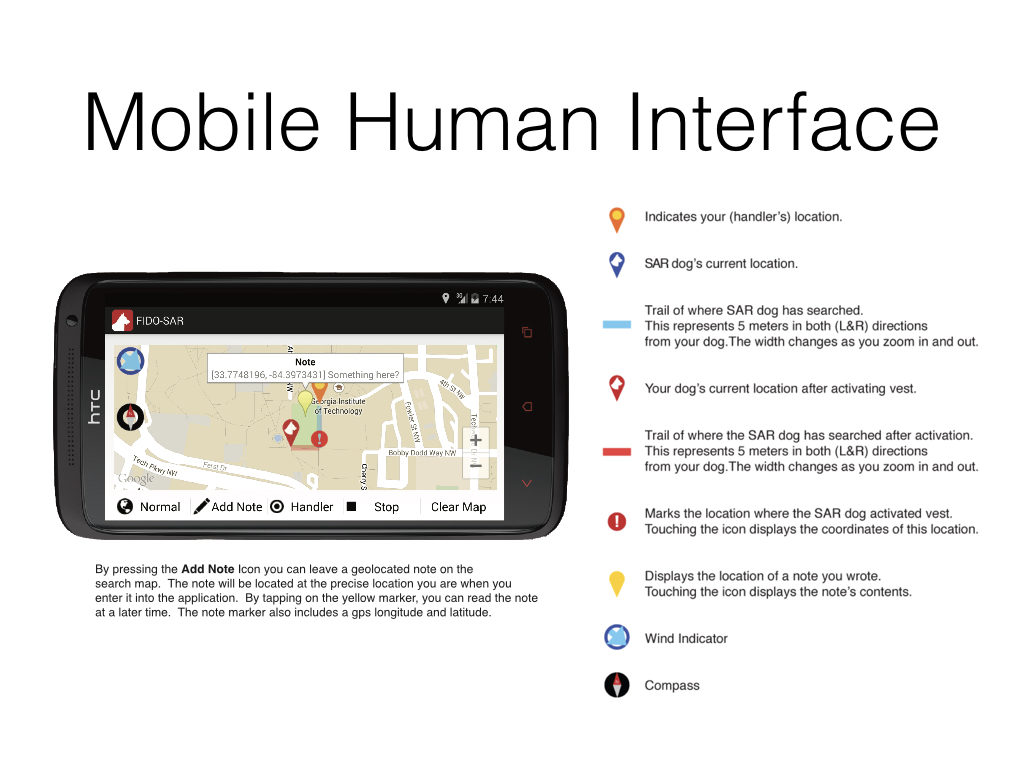
We have also started researching how dogs in the home might use a touch screen interface instead of interacting with a wearable device. To do this we first needed to complete research to understand how a canine might best interact with a touchscreen, and how these touchscreen should be built. Dogs are able to see blue and yellow and can quite easily complete a touchscreen tapping task with minimal training.
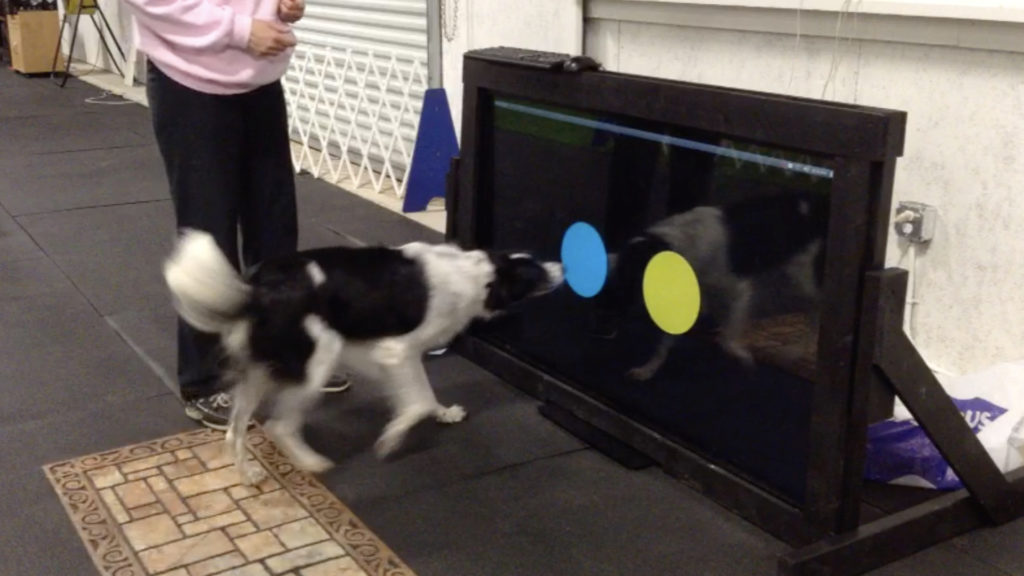
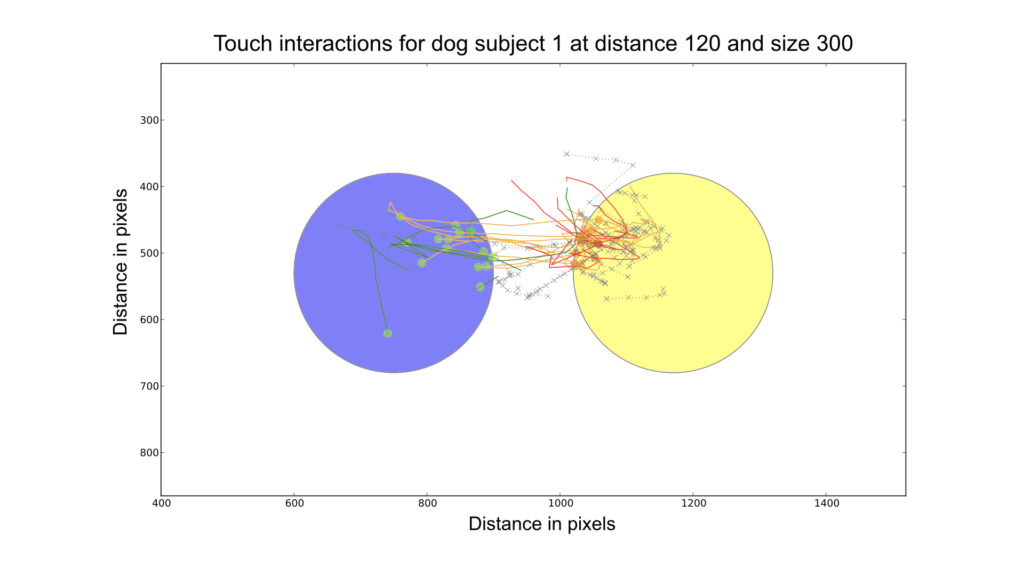
This research on dogs interacting with technology can be found in the following resources:



